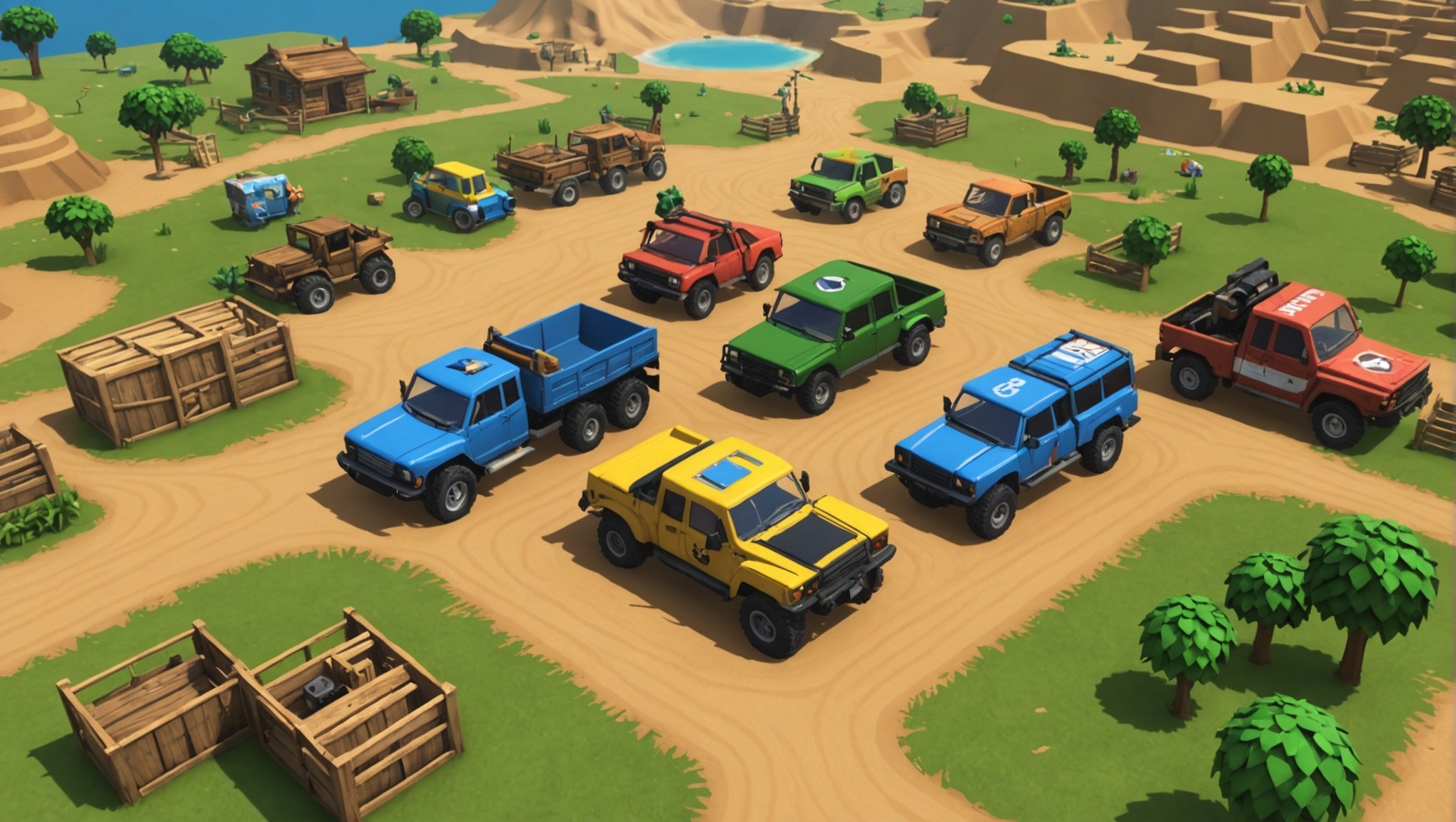In the rapidly evolving world of gaming, sandbox games have carved out a beloved niche. These games allow players to explore, create, and interact in open-ended virtual worlds. However, one of the most intricate aspects of these games is the multiplayer economy. Understanding the key considerations in designing such economies is critical for developers. This article explores these considerations, offering insights into creating engaging, balanced, and sustainable in-game economies for sandbox games.
Balancing Supply and Demand
Balancing supply and demand in a sandbox game’s economy ensures a dynamic and engaging player experience. This balance influences how players interact with the game world and with one another.
Also to see : How can developers create more lifelike animal behaviors using deep learning techniques?
First, consider resource allocation. In sandbox games, resources such as materials, currency, and items are foundational to economic stability. Overabundance can lead to inflation, while scarcity can frustrate players. A well-balanced game ensures that resources are neither too easy nor too hard to obtain.
Next, think about player-generated content. Sandbox games often rely on players to create and distribute goods and services. Developers must design systems that encourage trade and bartering. This involves setting up marketplaces or trading posts where players can exchange items. Additionally, integrating supply and demand mechanics that reflect the real-world economy can make the game more immersive.
In the same genre : What are the challenges of integrating haptic feedback into mobile AR games?
Moreover, consider dynamic pricing. Allow prices to fluctuate based on supply and demand. This can be achieved through algorithms that adjust prices in real-time as players buy and sell items. Dynamic pricing keeps the economy fluid and responsive, making the game more engaging.
Lastly, monitor player behavior. Regularly analyzing how players interact with the economy can provide insights into potential imbalances. Adjusting aspects of the economy based on this data ensures long-term health and player satisfaction.
Encouraging Player Interaction
A robust multiplayer economy thrives on player interaction. Encouraging players to trade, collaborate, and compete can enhance the overall game experience.
First, facilitate trade and communication. Implementing in-game communication tools such as chat systems and forums can help players coordinate trades and share information. These tools make it easier for players to find trade partners and negotiate deals.
Secondly, introduce guilds and alliances. These social structures can encourage cooperation and resource sharing among players. Guilds can have shared resources, goals, and strategies, making the game more engaging. Additionally, alliances can foster rivalry between groups, adding a competitive edge to the economy.
Next, consider events and quests. Seasonal events or limited-time quests can create temporary changes in the economy, encouraging players to participate and interact. For example, a holiday event might introduce special items that can only be obtained through trade, prompting increased player interaction.
Furthermore, design for player roles. Allow players to take on specific roles within the economy, such as merchants, craftsmen, or explorers. Specialized roles can encourage players to interact and depend on one another, fostering a more interconnected community.
Finally, integrate player feedback mechanisms. Allow players to provide feedback on the economy and trade systems. This feedback can be invaluable for making adjustments and improvements, ensuring that the economy remains engaging and fair.
Ensuring Fair Play
Ensuring fair play in a multiplayer economy is essential to maintaining player trust and satisfaction. Fair play involves preventing exploitation, cheating, and monopolies.
First, implement anti-cheat measures. Use software that detects and prevents cheating or exploitation. Cheating can disrupt the economy and create an unfair playing field, leading to player dissatisfaction.
Next, consider transaction limits. Set limits on the amount of resources or currency that can be traded at one time. This prevents players from exploiting the system and hoarding resources.
Moreover, introduce regulation mechanisms. Create in-game systems that monitor and regulate economic activity. This can include automated systems that detect unusual trading patterns or player behavior that could indicate exploitation. Regular audits and adjustments can also help maintain fairness.
Also, design for resource distribution. Ensure that resources are distributed fairly across the game world. Avoid placing too many valuable resources in one area, which can lead to monopolies. Instead, scatter resources throughout the game to encourage exploration and fair competition.
Finally, consider player feedback. Regularly solicit feedback from players regarding the fairness of the economy. This feedback can help identify issues and areas for improvement, ensuring that the economy remains balanced and fair.
Creating a Sustainable Economy
A sustainable economy in a sandbox game requires careful planning and ongoing maintenance. Sustainability involves ensuring that the economy can grow and adapt over time without becoming unbalanced or stale.
First, design for long-term growth. Ensure that the economy can scale with the player base. As more players join the game, the economy should be able to accommodate increased activity without becoming overwhelmed. This can involve introducing new resources, items, and trading opportunities as the player base grows.
Next, consider inflation control. Inflation can erode the value of in-game currency and resources, leading to economic instability. Implement systems that regulate the amount of currency and resources entering the economy. For example, implement sinks such as taxes, fees, or consumable items to remove excess currency and resources from circulation.
Moreover, plan for content updates. Regularly update the game with new content that affects the economy. This can include new items, resources, or trading opportunities. Regular updates keep the economy fresh and engaging, preventing it from becoming stagnant.
Additionally, think about player-driven markets. Allow players to influence the economy through their actions. For example, player-driven markets where prices are set by supply and demand can create a more dynamic and engaging economic environment.
Finally, ensure developer oversight. Regularly monitor the economy and make adjustments as needed. This can involve analyzing data on player behavior and economic activity to identify potential issues. Making timely adjustments helps maintain a balanced and sustainable economy.
Maintaining Player Engagement
Maintaining player engagement is crucial for the ongoing success of a multiplayer economy in sandbox games. Player engagement involves keeping players interested and invested in the game over time.
First, offer varied gameplay. Provide a variety of activities and challenges for players to engage with. This can include crafting, trading, exploration, and combat. Varied gameplay keeps the experience fresh and prevents players from becoming bored.
Next, introduce achievement systems. Implement systems that reward players for their economic activities. This can include achievements for trading, crafting, or resource gathering. Rewards can be in the form of rare items, currency, or in-game titles. Achievement systems provide goals for players to strive towards, maintaining engagement.
Moreover, think about leaderboards and rankings. Leaderboards that track economic performance can create a sense of competition and achievement. Players can strive to be the top trader, crafter, or resource gatherer. Rankings add a competitive element to the economy, encouraging ongoing participation.
Additionally, consider player customization. Allow players to customize their characters, properties, and items. Customization can be tied to economic activities, such as crafting unique items or trading for rare resources. Customization provides a personal connection to the game, enhancing engagement.
Finally, foster community involvement. Encourage players to participate in community events, forums, and social media. Community involvement creates a sense of belonging and investment in the game. Players who feel connected to the community are more likely to remain engaged.
Designing a multiplayer economy in sandbox games involves balancing supply and demand, encouraging player interaction, ensuring fair play, creating a sustainable economy, and maintaining player engagement. By considering these key factors, developers can create dynamic, engaging, and fair economies that enhance the overall game experience. A well-designed multiplayer economy not only keeps players invested but also fosters a vibrant and interconnected community. In the end, the success of a sandbox game hinges on its ability to create a compelling and balanced economic environment where players can thrive.











